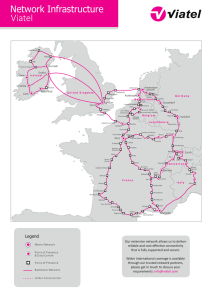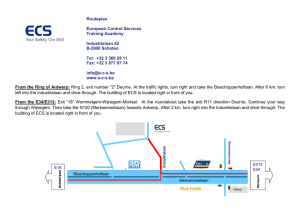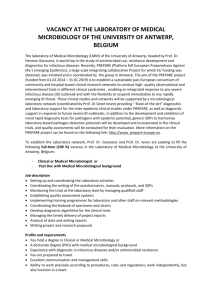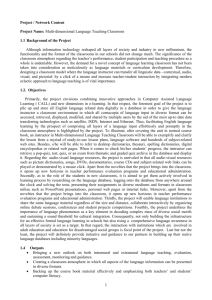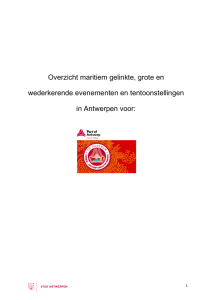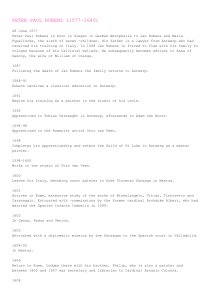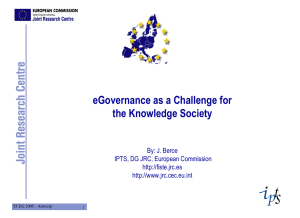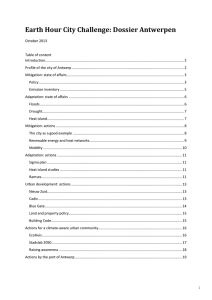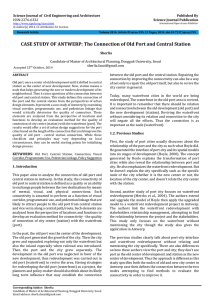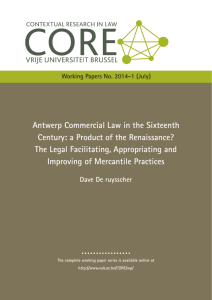Development of information technology and society
advertisement
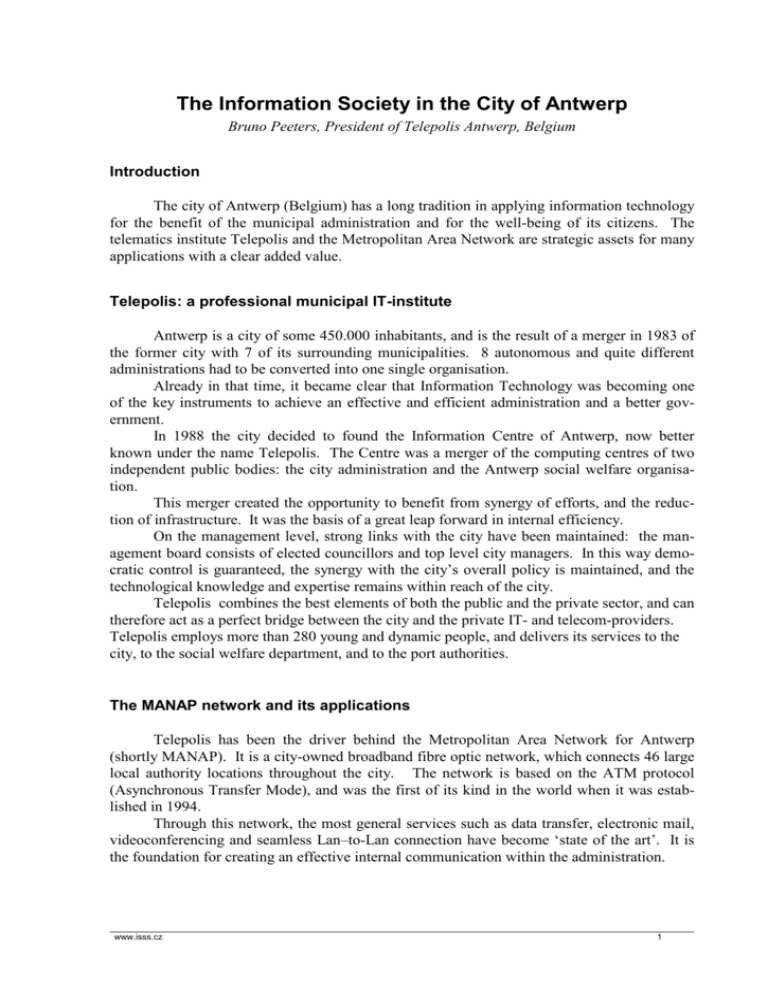
The Information Society in the City of Antwerp Bruno Peeters, President of Telepolis Antwerp, Belgium Introduction The city of Antwerp (Belgium) has a long tradition in applying information technology for the benefit of the municipal administration and for the well-being of its citizens. The telematics institute Telepolis and the Metropolitan Area Network are strategic assets for many applications with a clear added value. Telepolis: a professional municipal IT-institute Antwerp is a city of some 450.000 inhabitants, and is the result of a merger in 1983 of the former city with 7 of its surrounding municipalities. 8 autonomous and quite different administrations had to be converted into one single organisation. Already in that time, it became clear that Information Technology was becoming one of the key instruments to achieve an effective and efficient administration and a better government. In 1988 the city decided to found the Information Centre of Antwerp, now better known under the name Telepolis. The Centre was a merger of the computing centres of two independent public bodies: the city administration and the Antwerp social welfare organisation. This merger created the opportunity to benefit from synergy of efforts, and the reduction of infrastructure. It was the basis of a great leap forward in internal efficiency. On the management level, strong links with the city have been maintained: the management board consists of elected councillors and top level city managers. In this way democratic control is guaranteed, the synergy with the city’s overall policy is maintained, and the technological knowledge and expertise remains within reach of the city. Telepolis combines the best elements of both the public and the private sector, and can therefore act as a perfect bridge between the city and the private IT- and telecom-providers. Telepolis employs more than 280 young and dynamic people, and delivers its services to the city, to the social welfare department, and to the port authorities. The MANAP network and its applications Telepolis has been the driver behind the Metropolitan Area Network for Antwerp (shortly MANAP). It is a city-owned broadband fibre optic network, which connects 46 large local authority locations throughout the city. The network is based on the ATM protocol (Asynchronous Transfer Mode), and was the first of its kind in the world when it was established in 1994. Through this network, the most general services such as data transfer, electronic mail, videoconferencing and seamless Lan–to-Lan connection have become ‘state of the art’. It is the foundation for creating an effective internal communication within the administration. www.isss.cz 1 The benefits of MANAP are obvious. Due to the network, the communication between the different locations is much more efficient. Minutes, procedures, agendas, decisions are communicated in a fast and cost-effective way. Reduced telecommunication costs and improved productivity lead to a tremendous return on investment, and a complete pay back of the initial investments of 2.5 million Euro in only 5 years time. Return of investment Generally speaking one can state that in a first stage investments in IT may mean a supplementary budgetary effort. The city of Antwerp yearly spends about 32 million Euro for Telematic projects, which is about 3% of the total city budget. This number may seem very high, especially when realised in the public sector. But the return is there, proportional to the level of investment. We have indeed experienced that ICT has a severe impact on both the daily management of the city, and on the decision making process. The IT-budget becomes therefore a normal element in the total city’s budget, and is not any longer an ‘extra-ordinary’ budget line. ICT is in fact a not-to-measure added value in working costs for the city. More concrete it means that ICT applications replace the traditional applications in a more efficient way. Creating access, awareness and training Public authorities have a clear vocation to offer equal opportunities to all their inhabitants. Although there is a rapid evolution in the penetration of PCs and Internet connections in the home, there is still a long way to go until everybody has access to the information highway. The mission of a city is not limited to provide services. It has also the duty to raise awareness for the opportunities of today’s information society, and to create an as broad as possible access to information sources. To fulfil this mission, several complementary offerings to the citizens have been established: cybercafes, Internet training sessions, information booths, etc. Conclusion The city of Antwerp is convinced that telematics has a strategic value for the government of today’s cities. It has even become at an equal level of importance as the management of a city’s budget and finances. A long way has been gone already, with good results, but the most challenging period is still to come. The opportunities of the information age will not cease to grow. As a city, it is our democratic obligation to continue our efforts, and to utilise the new possibilities for the benefit of our citizens. www.isss.cz 2 Konference Internet in public administration www.isss.cz 26th – 27th March, 2001 Hradec Králové 3

